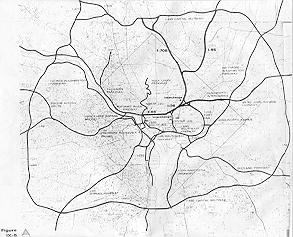Freeways And Parkways

Before posting.Make sure to.This subreddit is for asking for objective explanations. It is not a repository for any question you may have.E is for Explain - merely answering a question is not enough.LI5 means friendly, simplified and layperson-accessible explanations - not responses aimed at literal five-year-olds.Perform a keyword search, you may find good explanations in past threads.
Freeways and parkways. April 28, 2019. On our website you will find all the today’s answers to Daily POP Crosswords. Daily POP Crosswords features the best pop-culture-themed puzzles from the top puzzle constructors, including many from Dell Magazines and Penny Press, the #1 crossword-puzzle-magazine publisher. This fun and easy-to. How come we drive on parkways and park on driveways?Huh? Amiright?!” Good grief. This rusty one-liner’s gotten plenty of mileage, but few realize that the question is actually.
You should also consider looking for your question in the FAQ.Don't post to argue a point of view.Flair your question after you've submitted it.Category filters. At lot of answers here are not right. All my answers are relevant for the U.S. And Canada.A is a road that connects two points and has limited traffic control (i.e. It rarely has stop signs, except when going through a town. Highway implies increased speed over back roads since it is an arterial route.
There are both federal and state (provincial) highways.A is a highway that has no traffic control (i.e. There are no stoplights, stop signs, etc.) and uses on/off ramps to control traffic turns.
This type of highway is specifically designed for high speeds. While interstates are a type of freeway, there are many examples of freeways which are not interstates. There are both federal (portions of US-33, for example) and state freeways (OH-315 or OH-104 are two examples of state ones).An highway is a portion of a freeway network that happens to cross state lines or connects to other interstates. There are no state interstates, since by definition, these are a level higher than the state level.A is a landscaped arterial route, but is generally limited to a city or surrounding suburbs.Bonus:An is a parkway that is not intended to take a high load of traffic. Avenues are also usually marked by having trees lining the sides of the road, or lining a median strip. This is limited to a city level, or even may refer to a portion of a park or walking path.
You're pretty close. Except a highway is more a route designator than a type of road. Ark survival of the fittest xbox. We, a lot of this can vary depending on where you live. But, from my point of view:A highway is a road designed to carry volumes of traffic great distances.A parkway is a scenic road. It may or may not be a highway.A freeway is a highway that is not a toll road.An Interstate (and this is the one definition that is solid) is a highway that is part of the US Interstate System. They are funded through federal and state money, and are built to specifications for facilitating high speed traffic - minimum of four lanes, controlled access through onramps and off ramps, and so on.
Hi Ali,I agree with your rule of thumb. Controlled-Access Freeways (US) Motorways (UK) Expressways, usually closed tolled, U6/R6 (MY). Limited-Access Expressways (US) Motorways (UK) Expressways, usually open tolled, U6/R6 (MY).

Primary-Highway National-Highway (US) Primary routes/Trunk Roads (UK) Federal Route/Highway, U5/R5 (MY)The access control criteria (full control vs partial/limited control) is the more universal criteria, though not the names the roads usually known as.